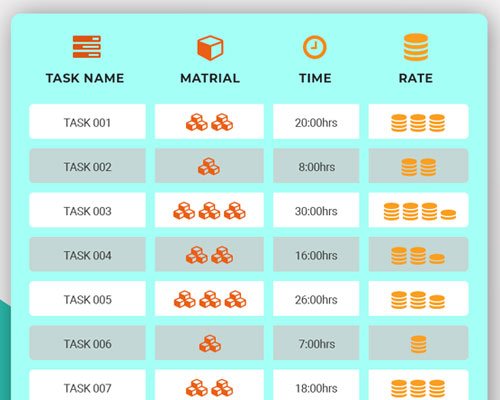When you have multiple projects on your platter, the best way to manage them is by using a project management tool that aims at delivering projects in a timely and successful manner.
Project prioritization is of utmost importance when it comes to managing multiple projects that needs to be delivered in a timely and successful manner.
Priorities matter:
- As a user, you may often have a huge list of tasks that need to be done within specific deadlines. In which case, you need to know the importance of each and every task and prioritize them to complete the project successfully.
- For each project that you take up, planning the sequence of tasks that need to be done are important check-points.
- A well-defined project prioritization is important for any organization to determine the seamless flow of the project from start to end.
- Streamlining project priorities help in efficiently utilizing the time and resources to achieve the desired goal.
- When you set project priorities, factors like the plan, scope, resources – cost and employees, time, negotiation, project changes are measured for effective completion.
- Projects can also be prioritized based on deliverables, task list, meetings, teams and employees, milestones, schedule and many other aspects of the project plan.
- As you move ahead in the project lifecycle, you will see that there are many dynamics that change with time. To avoid any kind of loss due to the changes, it is critical to focus on project priorities that further helps you optimize the organizational expertise to the best.
6 priorities for effective project management:
1. Prioritize Your Project
- In order to properly manage your time, prioritize your tasks based on what needs to be done first and why.
- Prioritizing also helps you set a sequence to view tasks from the highest to the lowest priority. As and when tasks are set, the priority levels are updated accordingly.
- While some task needs to be started well in advance of a deadline, some others can be scheduled for upcoming date/time to complete it.
- It is important to outline the purpose and goal of the project. Having a roadmap for the project from start to completion helps set priorities for a project.
2. Store Tasks on a Master List
- A shift in priorities can happen anytime during the progress of the project. To get a clear overview of any changes, it is best to store the list of all the tasks on the master list.
- It is always beneficial to set priorities for your projects into one master list that stores all your current and future task. You can store the various components of each task on the master list that can be further be broken down by monthly, weekly and daily goals.
- When you are able to see everything in one single interface, it helps you set priorities based on the importance of the task.
- Task2Bill, a collaborative project, and billing management tool, gives unlimited visibility into the project tasks, schedules and all other associated work in progress.
3. Break Large Tasks into Smaller Ones
- Breaking a huge project into simple manageable tasks and sub-tasks based on priorities always help to reach project goals on time.
- This helps largely when you are prioritizing project deliverables, which helps to meet deadlines leading to the accomplishment of a larger task or project.
- As you add sub-tasks based on the priorities, it becomes easier to control, manage and organize project tasks based on their importance.
- It also helps to create a better workflow for completion of tasks based on the set priority and time.
4. Estimate Time and Manpower
- By estimating the time and manpower needed for the completion of a task, you can organize priorities that enables you to set a realistic plan for the project.
- With the evolving lifespan of a project, the man-hours and man-power often change based on the project priorities. A proper estimation of the time and manpower will ensure a successful workflow for project completion.
- Setting realistic expectations and moving towards meeting them by taking definite steps based on priority help to build and preserve the reliability and credibility of your organization.
- It also enables users to better track a task’s progress. This takes into account the completed tasks and the pending sub-tasks that need to be done by a fixed date and time.
5. Prioritize Change Requests
- Being flexible and adaptable is critical when it comes to facing the challenge of the changing scenarios for any projects.
- Keeping your prioritized list of projects flexible and adaptable enables you to meet the changes in the workflow.
- Project priorities can shift or change because of many factors such as a change requests, an increase or decrease in the scope of work, cancellation or addition of tasks as and when required or requested by the client.
- By prioritizing tasks, it becomes easier to manage change requests as per the importance of the same. Changes are made based on the negotiation between the user and their clients, which again is defined by the priority of the change requests.
6. Manage Deadlines
- Deadlines help in managing priorities and also helps to give you a clear view on how much time you have to complete a specific task.
- When you take up a project, analyse the work required to successfully complete the same. By doing this, you can set priorities accordingly.
- Plan the steps needed to reach the end goal, develop the outline and strategy, divide work into smaller tasks based on priorities and begin working on it step by step.
- By defining the roadmap based on priorities, it becomes easier for you to manage and meet deadlines. Each change request and deadline is aligned with the priority of the project and the tasks and is met upon accordingly.




 0
0


